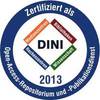Preview |
PDF, English
Download (8MB) | Terms of use |
Abstract
The use of patients' own cells to fight cancer has become a focus of cancer research in recent years. The production of T cells with tumour-specific receptors, so-called chimeric antigen receptors (CARs), is a method to activate the patient's immune system by recognising the tumour. This type of treatment is already being used successfully, especially in the treatment of leukaemia and myeloma. Due to the simultaneous activation of many immune cells, many patients experience side effects such as Cytokine Release Syndrome (CRS), which manifests itself through sepsis-like symptoms. Currently, an anti-IL-6 receptor antibody is administered in such cases to reduce the symptoms of CRS. To make the treatment with CAR T cells safer, attempts are being made to control the activity of the cells, for example by modifications in the receptor or by adding antagonists. In this project, AAV-based antagonists were generated for an anti-claudin-6 (CLDN6) CAR. For this purpose, an AAV-based screening method was used to identify the epitope of the CAR. This screening method should first be used to identify the anti-CD19 FMC63 antibody. When the CD19 protein was screened, it was found that the accumulation of aromatic amino acids, in the sequences displayed on the particles, prevented the formation of the viral capsids. Using capsid mutants, the production of epitope-bearing capsids could be improved, allowing the presentation of more complex structures and stronger charges. These improvements allowed the epitope of the anti-CD19 3B10 antibody and the anti-CLDN6 IMAB027 antibody to be validated. The epitope-bearing particles could then be used to demonstrate functional inhibition of the anti-CLDN6 CAR. In vitro, it was demonstrated that the simultaneous administration of the viral particles and the CAR T cells led to a temporarily reduced activation of the T cells. Furthermore, it could be shown that the cultivation of an anti-CLDN6 CAR Venus reporter cell line with the particles does not lead to an activation of the T cells, although the viral particles used presented the epitope of the CAR.
| Document type: | Dissertation |
|---|---|
| Supervisor: | Müller, apl. Prof. Dr. Martin |
| Place of Publication: | Heidelberg |
| Date of thesis defense: | 7 July 2023 |
| Date Deposited: | 03 Jun 2025 11:47 |
| Date: | 2025 |
| Faculties / Institutes: | The Faculty of Bio Sciences > Dean's Office of the Faculty of Bio Sciences Service facilities > German Cancer Research Center (DKFZ) |
| DDC-classification: | 500 Natural sciences and mathematics 570 Life sciences |









